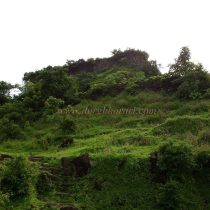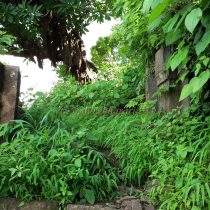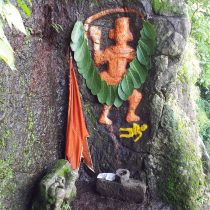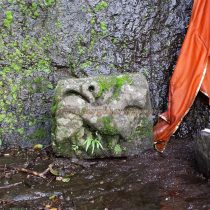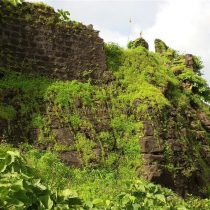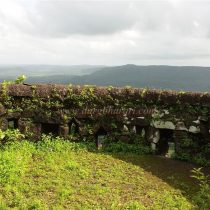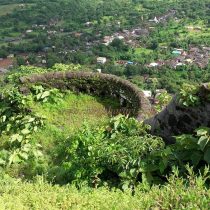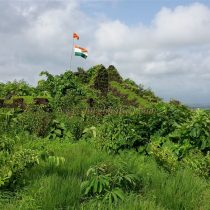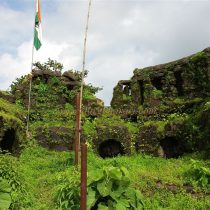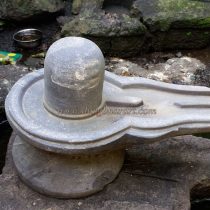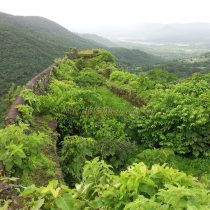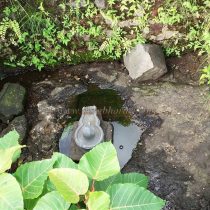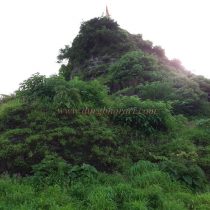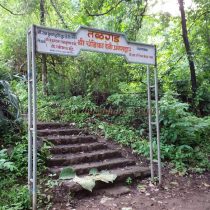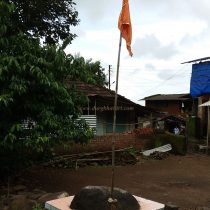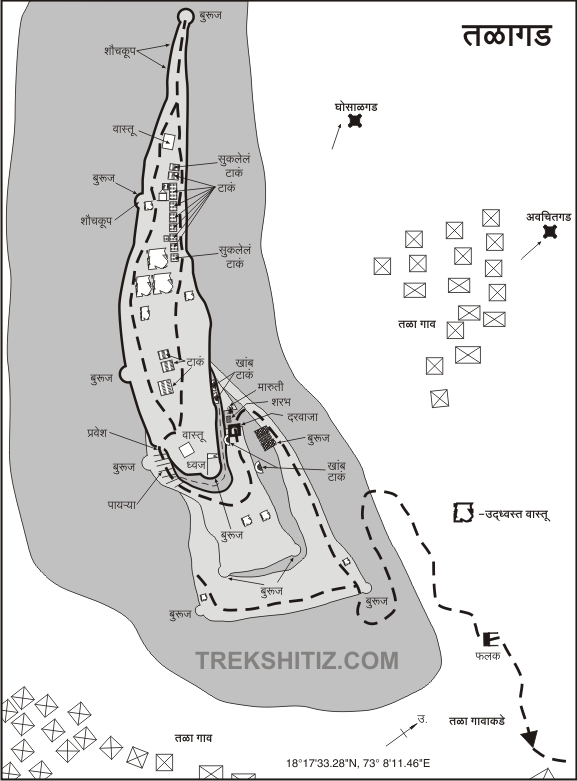TALAGAD
TYPE : HILL FORT
DISTRICT : RAIGAD
HEIGHT : 880 FEET
GRADE : EASY
Talagad, Ghosalgad, and Avchitgad forts were built to keep an eye on the Mandad creek where the River Kundalika meets the sea. Talagad is the smallest fort in terms of size and height. To reach Talagad, one should reach Indapur village on the Mumbai-Goa highway. From here there is a fork leading to Tala village. Half an hour is enough to reach Tala village from Indapur. The fort has been constructed on a hill spread in the north-south directions of the village. Divided into three phases, the fort looks tall from the village, but a paved road reaches half of the height of the fort. From here, take a path to the left and go straight to the fort. This footpath takes you to the first stage of the fort in 15 minutes. There are some remnants of ramparts and quadrangle structures over here. This path keeps the main hill of the fort on the left and takes a detour and comes back to the fort.
...
From here, there are steps carved in the rock that leads to the gate of the fort. Although this door is currently in a state of disrepair, the pillars of the door are still intact. There is a statue of Hanuman carved in the rock and a Sharabh sculpture. Due to this idol, this door is known as Hanuman Darwaza. On the outside of the door, a cistern is dug, while on the inside, the broken remains of the porch are visible. This is the second phase of the fort. Next, take a detour and climb the steps leading to the third stage. Strong ramparts have been built on the left side of these steps. There are jungles in some places. There is a large semi-circular bastion that stands in the way. Going up the stairs we reach the area of the main gate of the fort. The gate of Talagad’s citadel is also completely extinct and we reach the top of the fort in half an hour after leaving the village. Going up from here, the top of the fort is the third stage. This third part is the vast plateau inside the fort. The top of the fort is about 300 meters wide and 400 meters long. The fort is spread from south to north and on the right side of the fort is a large quadrangle structure and a two-storied bastion of strong construction. This is the place to hoist the flagpole. There are steps on the inside to reach the ramparts. The ramparts of the fort are still intact and the bastions at many places are still in good condition. On the left are seven large cisterns carved in the rock, and beyond the cisterns are some remnants of the quadrangle structures, and near it is the ‘Lakshmi Kothar’. Beyond it is a strong rampart to the north. After visiting these ramparts and bastions which are still in good condition, you should come back and visit the two-storied bastion to the south. From the last bastion of this rampart, one can see all the areas like Ghosalgad, Mahad, Roha creek, while on the east you can see Savitri river and in the distance, you can see the main range of Sahyadri. Apart from this, there is a temple of Mahadev without a roof on the fort, and the shape of the shivling is not round like others but square. The construction of the fort shows that every effort is being made to make the fort strong. Since the fort was only used for surveillance, there should not be many soldiers on the fort. As the area of the fort is not very huge, you can visit the entire fort around in an hour. In ancient times, goods landed at the Konkan port via the Kundalika river and went to the wharves via Tamhini. The Kuda Caves on this trade route and the forts of Talagad, Ghosalgad, and Avchitgad still stand today, testifying to the antiquity of this route. In 1657, the forts of Talgad and Ghosalgad were captured by the Marathas from Adilshah and were added to the Swarajya. During the invasion of AfzalKhan in 1659, Siddi had laid siege to Talagad but as soon as news of AfzalKhan's death reached Siddi, he removed the siege. Later, after giving 23 forts to the Mughals as per the treaty of Purandar, the remaining 12 forts belonging to Shivaji Maharaj included Talagad. After the death of Shivaji Maharaj, Talagad came to Siddi. During the Peshwa period, the great Bajirao defeated Siddi and conquered Talagad on 17 April 1735. In 1818, Colonel Prother captured Talagad along with Ghosalgad.
© Suresh Nimbalkar

